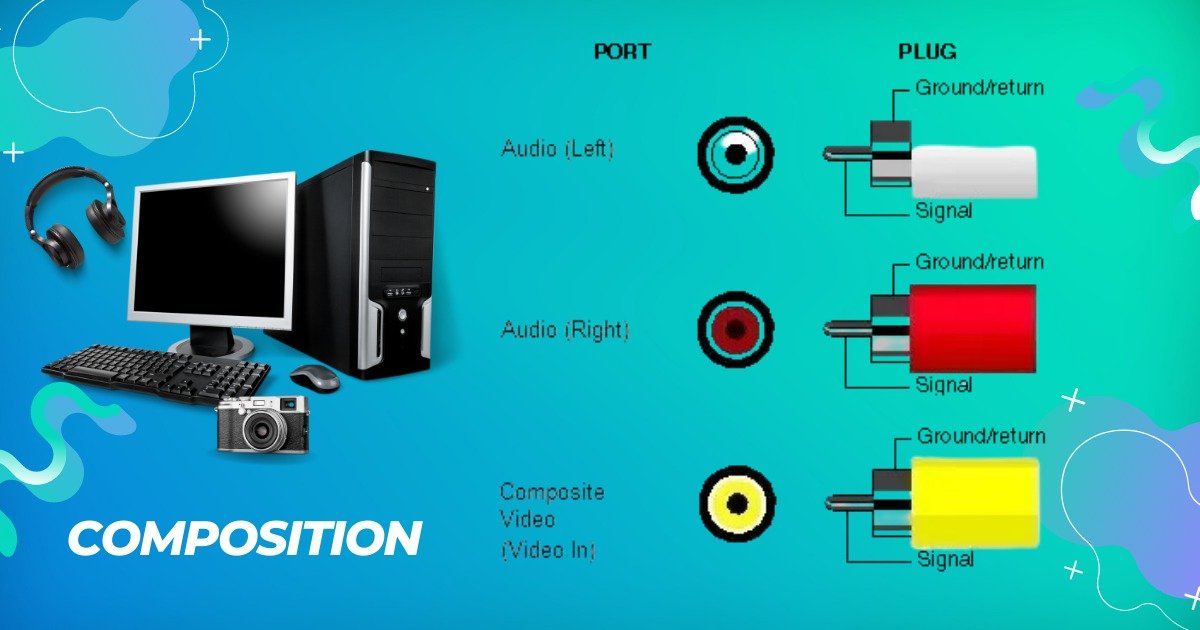If you’ve ever yearned for audio clarity that touches your heart and transports you to another realm, you’re not alone. You may have experienced moments where your audio seemed to lose its spark, leaving you craving more. That’s where RCA Cables come into play, unraveling a world of possibilities that will elevate your auditory experience to unprecedented heights.
Looking to dive into the world of unbeatable audio clarity? Say hello to RCA Cables – the ultimate secret to crystal-clear sound!
What is RCA Cable?
The RCA Cable functions as an electrical connector widely used for the seamless transmission of audio and video signals. Its name is taken from the Radio Corporation of America, the company that first introduced this design in the 1930s. The RCA Cable comprises two essential components: a male plug and a female jack, commonly referred to as the RCA plug and RCA jack. Together, they form a vital link in establishing smooth and reliable audio-visual communication across various devices.
Composition of RCA Cables:
Cables are commonly used with a standard plug on each end. These plugs consist of a central male connector surrounded by a segmented ring, which provides spring gripping pressure when connected. On the other side, devices have a socket, or female jack, which features a central hole surrounded by a metal ring. The jack’s ring is slightly smaller in diameter and longer than the plug’s ring, allowing a snug fit when connected. Between the outer and inner rings of the jack, there is a small area filled with an insulator, typically made of plastic (although earlier versions or those used for RF connectors were made of ceramic).

These connectors are frequently color-coded to assist with identification: yellow is commonly used for composite video, red denotes the right audio channel, and white or black signifies the left channel of stereo audio. This trio (or pair) of jacks is commonly located on the rear panel of audio and video equipment.
The male plug comprises a center pin with a diameter of 3.175 mm (1/8 inch) and is encircled by an outer shell with a diameter of 8.25 mm (1/3 inch).
Usage of RCA Cable
Originally designed for audio signals, the RCA connector found various other applications beyond its initial purpose. It has been utilized as a DC power connector, an RF connector, and even as a connector for loudspeaker cables. One of its widely known uses is for carrying composite video signals, although it should be noted that it does not provide ideal impedance matching for this purpose. Additionally, RCA connectors and cables are commonly employed for transmitting S/PDIF-formatted digital audio, with the plugs often colored orange to distinguish them from other standard connections.
TV sets often feature one or more sets of these connectors to easily connect camcorders, other portable video sources, and video game consoles. While various connectors, including analog and S/PDIF audio, as well as composite and component video, can utilize identical 75 Ω cables, there has been a proliferation of special-purpose cables tailored for each specific use. It’s important to note that the quality of the cable plays a crucial role; using a cheap line-level audio cable might not successfully transfer component video.
Working of RCA Cables
To establish connections, one needs to insert the cable’s plug into the female jack on the device. The plug contains a signal-carrying pin that extends from it and often contacts the socket before the grounded rings meet. In situations where the audio components lack common ground and are powered during the connection process, this can result in a loud hum or buzz. Moreover, if the plug partially disengages from the jack, the ground connection may be broken while the signal remains intact, leading to continuous noise.
For digital audio, if the connection is successfully established using the cables, the sound will faithfully reproduce the original signal. This is because a digital signal can only be fully received or not received at all. To ensure optimal performance, cables should meet the S/PDIF specification as defined by the international standard IEC 60958-3.
RCA cables continue to thrive for several reasons:
RCA audio and video cables have lost some of their previous popularity. They have faced competition from non-RCA formats like HDMI cables, leading to their decreased usage. Nevertheless, RCA technology continues to endure and remains functional in various applications. Despite the decline in popularity, RCA cables are still preferred for several reasons:
Versatility of RCA Cables
RCA cables transmit audio/video signals for an extensive variety of equipment.
- They are best used for video signage and video surveillance.
- They connect desktop computers and laptops to home theater systems.
- They link some televisions to DVD players, Blu-ray Disk players, gaming consoles, video cameras, and digital still cameras.
- RCA connects audio equipment such as power amplifiers, mixers, speakers, CD players, and turntables.
- Multiple devices can also be connected to an automobile’s sound system through these RCA cables via car audio installation cable.

RCA Cables Compatibility
RCA cables Attach Quickly
The most appealing point of RCA cables has always been that they provide a very solid connection yet are easier to swiftly attach and detach than thread.
Cost-Effectiveness of RCA Cables
Due to the continued popularity of RCA cables, these cables are relatively inexpensive. You can have a 6-foot standard dual RCA audio cable for quite a few dollars. Even a pro series of SMC’s three-connector RCA audio/video cable is very reasonably priced.
Enhanced quality of RCA
The quality of audio and video signals has increased considerably through the years, and so has the quality of RCA cables. You can now opt for 24-karat gold-plated connectors with beefed-up molding for strain relief. Some cables come with extra shielding for protection from unwanted noise and interference. Advanced RCA cables have a higher bandwidth than older cables. This means they can transmit more data, allowing for higher-quality signals.
Adaptivity of RCA Cables over time
Some RCA cables allow analog signals to be converted to digital signals for improved quality and compatibility with modern devices. For example, SMC’s Sony/Philips has a digital interconnect format (S/PDIF) cable.
Conclusion
RCA Cables stands as the ultimate heroes of audio and video transmission and continue to weave their magic in the world of unparalleled audio clarity. As technology advances and new connectors emerge, RCA cables stand firm, offering unparalleled versatility and ease of use. Whether you’re a devoted audiophile or a casual listener, these unassuming connectors hold the power to elevate your auditory experience to unprecedented heights. From connecting your home theater system to linking multiple devices in your car’s sound system, RCA cables have proven their worth time and again. Their cost-effectiveness, enhanced quality, and adaptivity over time make them a timeless choice for audio enthusiasts and tech-savvy individuals alike.
FAQs
- Does the length of RCA cables matter?
When using lengthy interconnects or speaker cables, the quality of the cable becomes crucial. Longer runs can result in additional signal losses, making it imperative for the cable to effectively safeguard the signal, ultimately leading to unimproved sound quality.
- Can RCA cables expire?
Over time, your cables might face deterioration, but there are preventive measures you can take. The most frequent cause of cable wear is continuous disturbances. In some cases, certain metal components in the cable connections may rust. However, if you regularly replace your cables while upgrading your equipment, these issues should be minimal.
- What is the required voltage for RCA cables?
A high-quality RCA audio source typically features a voltage rating of approximately 1-2 Volts and maintains a low impedance. The voltage represents the “strength” of the signal, while the “impedance” refers to the signal’s integrity once the RCA is connected to the amplifier.
- How many ohms are taken by RCA cable?
The standard impedance on a coaxial cable is 75 Ohm. However, RCA connectors, despite their popularity, are not intended for digital applications and cannot achieve the 75 Ohm impedance. As a result, many RCA cables adopt a 50 Ohm impedance, leading to noise issues caused by impedance mismatch.
- Where do RCA cables get connected?
RCA cables are inserted into the amp’s RCA socket. The red RCA cable connects to the amp’s red socket, while the white RCA cable connects to the white socket. Typically, the amp’s RCA sockets are located at the back of the device.


